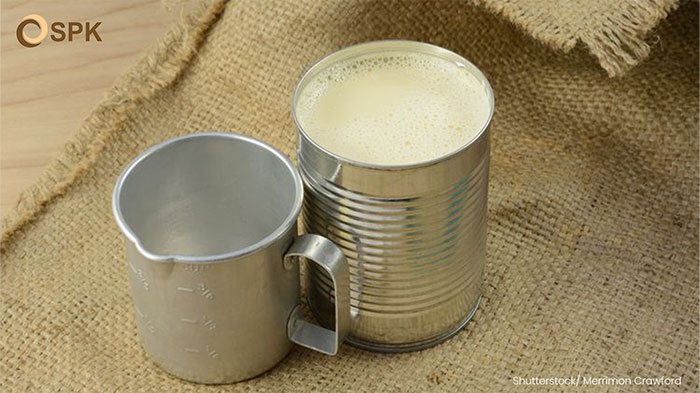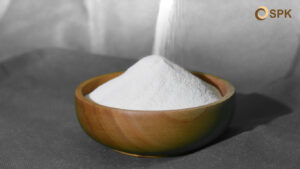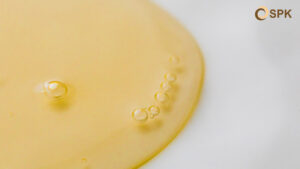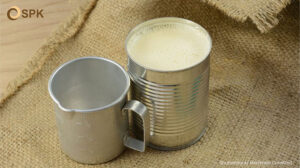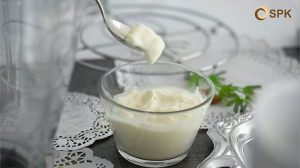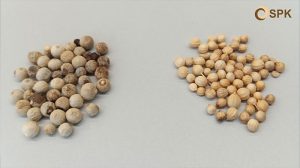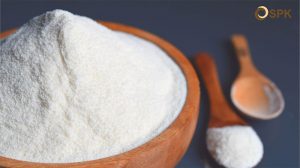Evaporated milk is often confused with sweetened condensed milk, even though the two are different milk derivative products.
In everyday life we may often hear the terms sweetened condensed milk or sweetened condensed milk. Sweetened condensed milk has a thick and sticky texture and is often used as an addition to food or drinks such as sweet martabak, es teler, or as a filling for white bread. Sweetened condensed milk itself is made from milk that has had its water content reduced and sugar added. Apart from providing a sweet taste, sugar also functions as a preservative because it can prevent the growth of bacteria.
Apart from sweetened condensed milk, there is also something called evaporated milk. Maybe many of us are not very familiar with this name. Evaporated milk is milk that has had its water content reduced by 60% and followed by homogenization, sterilization and canning processes. The texture is not as thick as sweetened condensed milk and is not too sticky. The sterilization process, which uses heat at a temperature of 120 to 122 degrees Celsius, causes evaporated milk to have a slight caramel taste with a slightly darker color than regular milk.
History of Evaporated Milk

Notes from explorer Marco Polo in the early 13th century stated that the Tatar tribe in Mongolia had a way to condense milk. Each horse rider carries 4.5 kg of milk paste which can be mixed with water to make liquid milk for drinking. But it is possible that the notes refers to fermented milk, not fresh milk concentrate.
The concept of preserving milk in concentrate form by applying heat was first carried out by the French inventor, Nicolas Appert, around 1793. The basic principle of the process of sterilizing milk using heat was introduced by the Swiss, John B. Meyerberg. John B. Meyerberg migrated to the United States and was awarded a patent for the process of sterilizing milk by steam pressure in 1884. In the following year, evaporated milk was made on a commercial scale in the United States based on Meyerberg’s patent under the Carnation brand. The Carnation brand was later purchased by Nestle in 1985.
In Indonesia itself, the type of milk that was previously known was sweetened condensed milk which arrived with the Dutch in 1873. At that time, sweetened condensed milk was only consumed by Dutch soldiers in Indonesia. Sweetened condensed milk products were then introduced to Indonesian society in 1922 by De Coöperatieve Condensfabriek Friesland which is now known as PT. Frisian Flag Indonesia with Friesche Vlag products. Currently there are various brands of evaporated milk circulating in Indonesia, both domestic and foreign products.
Use of Evaporated Milk
Evaporated milk is made with the aim of being a substitute if fresh milk is not available, for example when there is a power outage which causes fresh milk stored in the refrigerator to become stale. To use evaporated milk as a milk substitute, one can of evaporated milk can be mixed with one and a half cans of water. In taste, evaporated milk is almost the same as regular milk, but with a longer shelf life of up to 1 year.
Evaporated milk is usually stored in cans with a volume of 12 ounces or around 350 ml. Evaporated milk is widely used in making cakes, candies, shakes and custards. The use of evaporated milk can be adjusted to suit your needs, you can mix it with water first to make a milk solution or you can use it straight after pouring it from the can. Generally, after the can is opened, the entire evaporated milk must be used, it should not be left for too long.
Benefits of Evaporated Milk
Because evaporated milk comes from pure cow’s milk, the benefits it has are also the same. Evaporated milk helps bone growth because of the calcium content it contains. Apart from that, the calorie and protein content of evaporated milk can be a source of energy for the body. Evaporated milk is very good for those who are on a program to gain weight to achieve their ideal body weight.
This is an explanation of evaporated milk, starting from its history to its benefits. Evaporated milk can be a substitute for milk in making foods and drinks that require milk. Creamer also has this substitute function. Creamer can be a substitute for milk and coconut milk for dishes that require both. For quality creamer products, always use creamer from Santos Premium Krimer.

